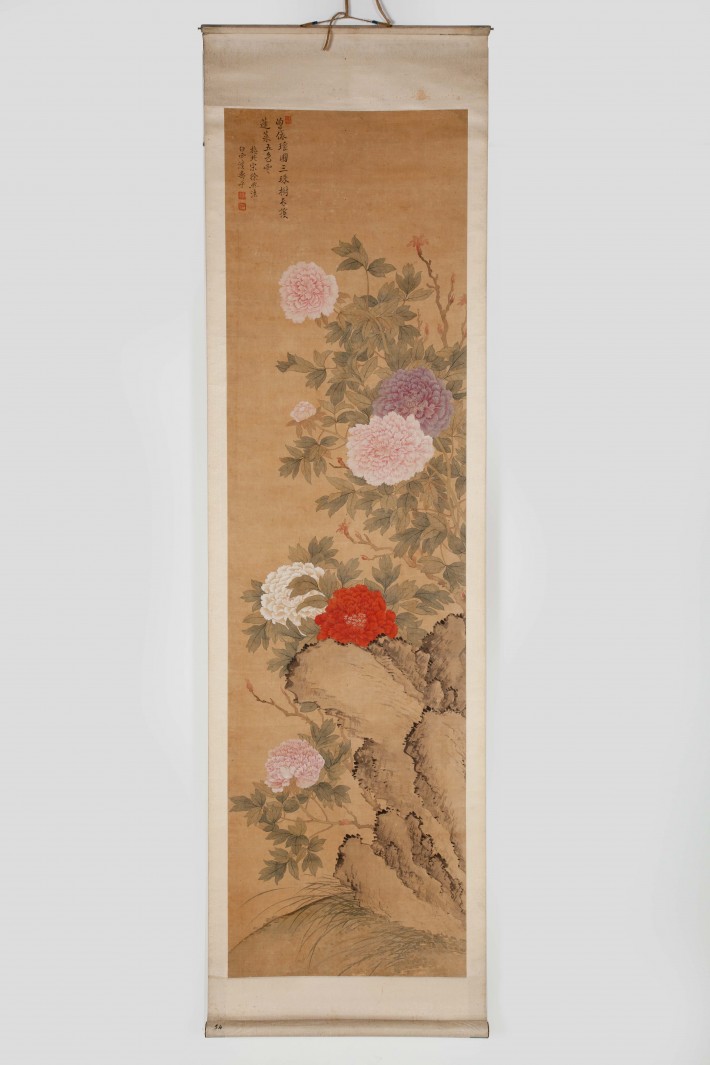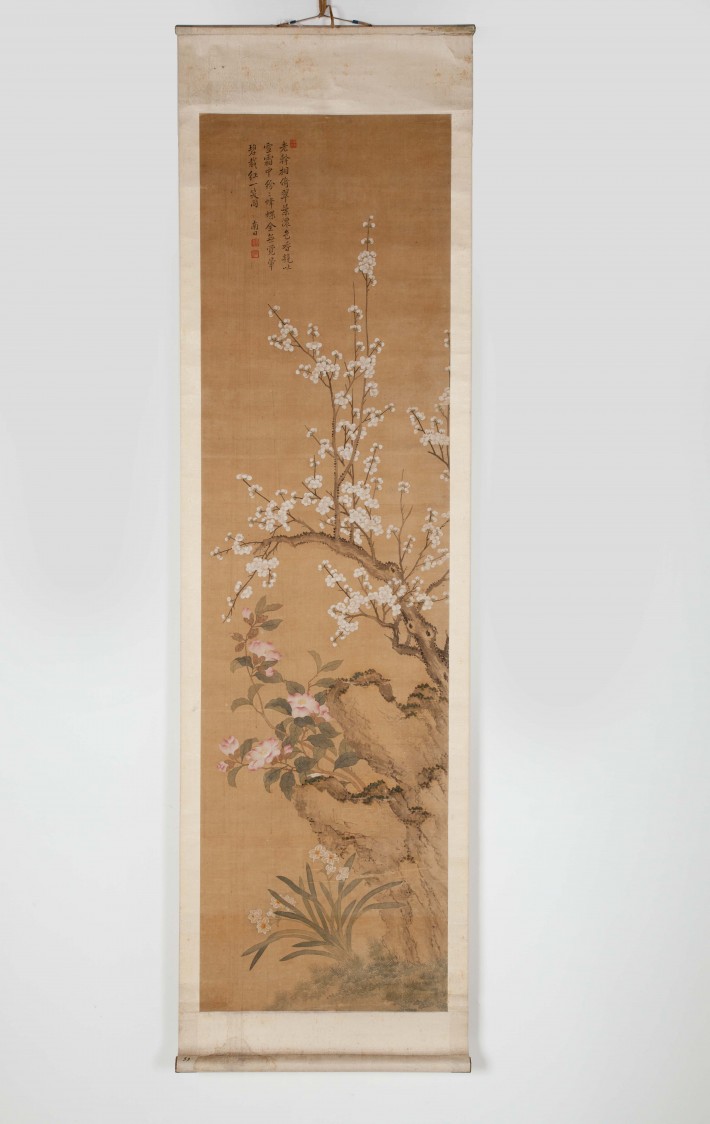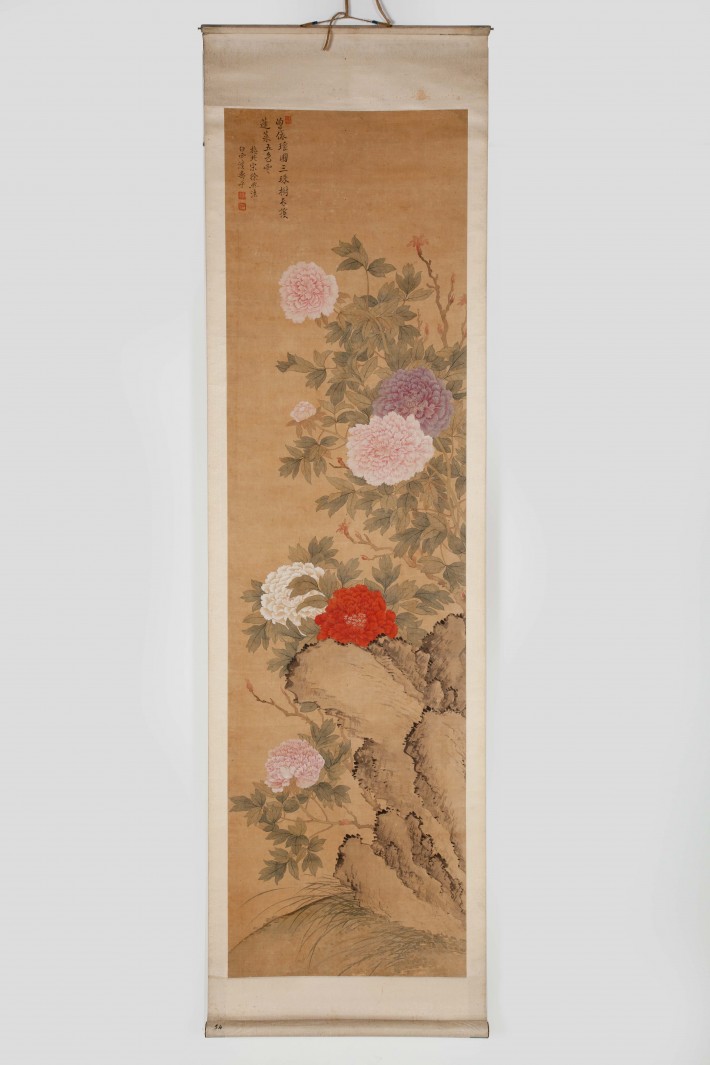This restoration was generously sponsored by Robert F. Smith.
Yun Shouping also known as Nantian (1633 – 1690), was a major artist of the early Chinese Qing dynasty. He was regarded as one of the “Six Masters” of the Qing period. Yun was born to a prominent but impoverished family in Wujin, Jiangsu province. He excelled in his classes and devoted himself to art; as early as the age of eight, he was composing poetry on lotus blossoms. As a young man, once he had the means, Yun toured China and became acquainted with the art of Wang Hui and Zha Shibiao. He studied flowers, birds, insects, and bamboo. Yun imitated the 11th century artist Xu Xi’s mogu (or ‘boneless’) method, an approach that tried to express art without rigidly defined outlines and forms. Thus, Yun’s style is vibrant and expressive. In his drawings he attempts to display the inner vitality and spirit of his subjects in painting. He was unafraid of using strong colors, such as reds and purples, which had traditionally been shunned by Chinese painters as they were seen as gaudy and offensive. He revived the genre of flower paintings in China and became popular throughout the country. Yun devoted himself exclusively to painting and living in poverty by refusing to work for the court; his style would be imitated by the next generations and he became the founder of the Ch’ang-chou school of painting.
This project presents a rare collection of eleven Chinese vertical scrolls painted by Yun Shouping on the theme of “Flowers and Birds.” These works are characterized by the soft ink diluted with water which produces a soft rendering of the subject without a strong outline. The scrolls are painted on silk, lined up on paper and the edges are decorated with damask silk.
Restoration Process Included:
- Scientific and laboratory studies
- Photographic documentation
- Anti-infestation measures
- Cleaning the silk fabric and damask silk fabric
- Cleaning with microaspiration
- Consolidation by needlework of the tears in the silk
- Consolidation of the paper
- Cleaning and conservation of the original lining
- Touching up of the areas where the color is missing




No comments yet.